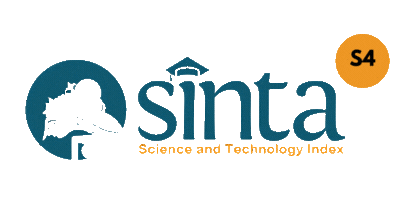IMPLEMENTASI METODE DOUBLE EXPONENTIAL SMOOTHING HOLT PADA PERAMALAN IPM DI KALIMANTAN TIMUR
DOI:
https://doi.org/10.47111/jti.v18i2.14321Keywords:
Human Development Index, Double Exponential Smoothing, DES Holt, MAPE, Kalimantan TimurAbstract
Human Development Index (HDI) is a human development measuring tool introduced by the UNDP in 1990. Based on data from the East Kalimantan Central Statistics Agency (BPS), since 2010, the East Kalimantan Province HDI has experienced an upward trend with a decline in 2020 due to pandemic . In 2022, East Kalimantan Central Statistics Agency recorded the HDI value for East Kalimantan as reaching 77.44. This achievement makes East Kalimantan Province a province with a high level of human development and the 3rd ranked province with the highest HDI nationally. Based on this ranking, there is still room for the government to increase the HDI value of East Kalimantan to prepare it to become the new capital of the country. Therefore, a forecast is needed to find out the HDI value of East Kalimantan Province for the next few years as a consideration for the government in making policies. One forecasting method that can be used to predict the HDI of East Kalimantan Province is Holt's Double Exponential Smoothing (DES). The results obtained from DES Holt forecasting of HDI data for East Kalimantan Province for 2023-2027 are 77.95; 78.46; 78.98; 79.49; 80.01 with a Mean Absolute Percentage Error value of 0.229%.
Downloads
References
Badan Pusat Statistik, “Indeks Pembangunan Manusia 2021,” 2022.
M. Fajar dan Z. Azhar, “Indeks Persepsi Korupsi dan Pembangunan Manusia Terhadap Pertumbuhan Ekonomi Di Negara-Negara Asia Tenggara,” Jurnal Ecogen, vol. 1, no. 3, hlm. 681–690, 2019.
Badan Pusat Statistik Provinsi Kalimantan Timur, “Provinsi Kalimantan Timur Dalam Angka 2023,” Feb 2023.
Badan Pusat Statistik Provinsi Kalimantan Timur, “Indeks Pembangunan Manusia Provinsi Kalimantan Timur 2022,” Des 2022.
C. L. Karmaker, “Determination of Optimum Smoothing Constant of Single Exponential Smoothing Method: A Case Study,” International Journal of Research in Industrial Engineering, vol. 6, no. 3, hlm. 184-192., 2017.
A. Yuliana dan A. Fauzy, “Analisis Double Exponential Smoothing pada Indeks Pembangunan Manusia di Kabupaten Banyumas,” Emerging Statistics and Data Science Journal, vol. 1, no. 1, hlm. 20–29, 2023.
F. Sidqi dan I. D. Sumitra, “Forecasting Product Selling Using Single Exponential Smoothing and Double Exponential Smoothing Methods,” dalam IOP Conference Series: Materials Science and Engineering, Institute of Physics Publishing, Nov 2019.
A. Fitriyani dkk., “Peramalan Jumlah Klaim Di BPJS Kesehatan Cabang Metro Menggunakan Metode Double Exponential Smoothing,” Jurnal Siger Matematika, vol. 03, no. 01, hlm. 17-22., 2022.
H. S. Pakpahan, Y. Basani, dan R. R. Hariani, “Prediksi Jumlah Penduduk Miskin Kalimantan Timur Menggunakan Single dan Double Exponential Smoothing,” Informatika Mulawarman : Jurnal Ilmiah Ilmu Komputer, vol. 15, no. 1, hlm. 47–51, 2020.
M. Taufik, A. S. Afrah, E. S. Sintiya, dan D. Hariyanto, “A Comparative Study Of Time-Series Models For Forecasting The Indonesian Gold Price,” dalam ACM International Conference Proceeding Series, Association for Computing Machinery, Nov 2020, hlm. 79–83.
I. G. B. N. Diksa, “Peramalan Gelombang Covid 19 Menggunakan Hybrid Nonlinear Regression Logistic – Double Exponential Smoothing di Indonesia dan Prancis,” Jambura Journal of Mathematics, vol. 3, no. 1, hlm. 37–51, Jan 2021.
S. M. Robial, “Perbandingan Model Statistik Pada Analisis Metode Peramalan Time Series:(Studi Kasus: PT. Telekomunikasi Indonesia, Tbk Kandatel Sukabumi),” Jurnal SANTIKA, vol. 8, no. 2, hlm. 823–838, 2018.
H. Kusharjanto, “Evaluasi Pembangunan Manusia di Masa Pandemi,” detikNews. Diakses: 12 Februari 2024. [Daring]. Tersedia pada: https://news.detik.com/kolom/d-5347456/evaluasi- pembangunan-manusia-di-masa-pandemi












